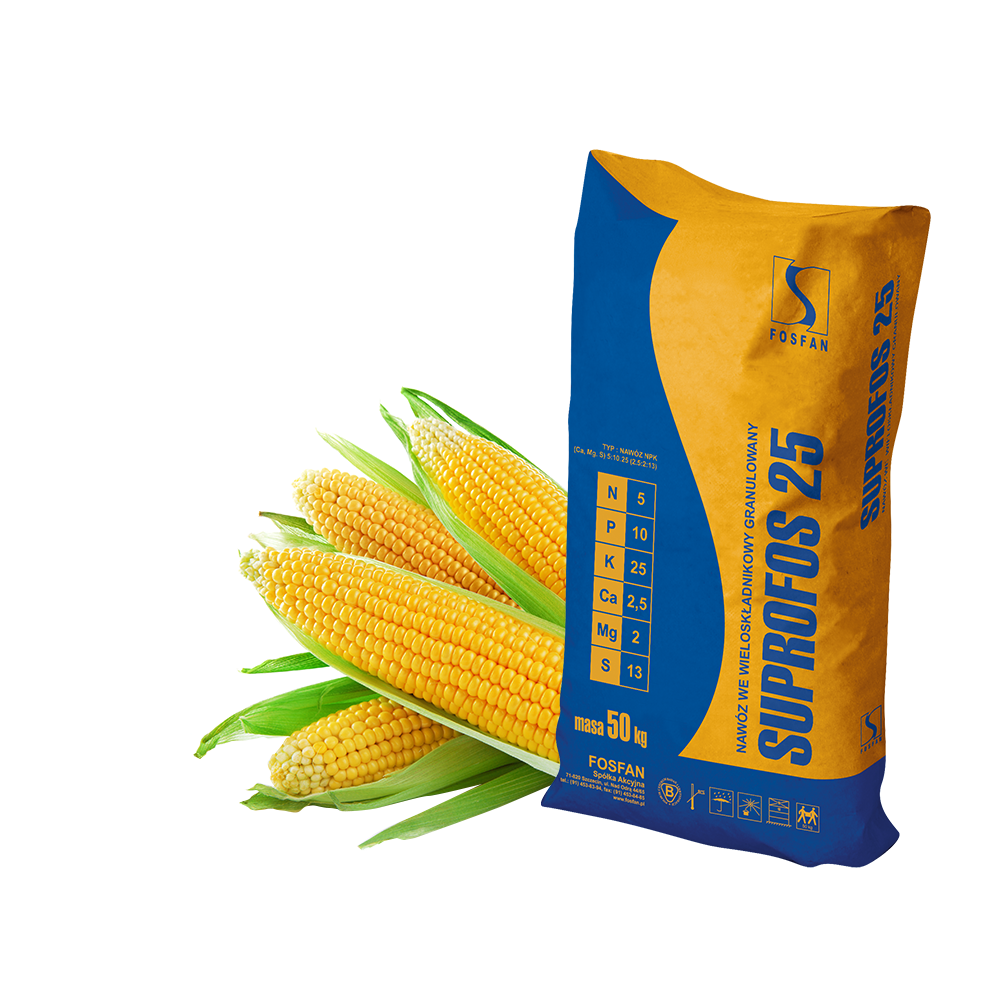Advice
Fertilization of potato
Potato is an extremely popular plant constituting a permanent part of the diet of many of us. This plant is rich in many vitamins and minerals (it is primarily a valuable source of potassium). It also provides fibre and starch. Potato has relatively high demands with regards to soil and nutrients, so to get high yields appropriate fertilization should be applied.
more
NITROGEN (N)
The recommended dose of nitrogen per hectare with an expected yield of 30 tons of tubers amounts to about 100-120 kg of N. Using the optimal dose of manure, the dose of nitrogen may be (at such amount of expected yield) reduced by 25-45%. For potato fertilization different forms of nitrogen can be used, such as ammonium, nitrate or amide. For the early variety of edible potato nitrogen may be applied in a single dose before planting. In cultivation of late varieties of edible potato and in cultivation of industrial potato it is recommended to apply nitrogen in two terms: about 2/3 of the total dose – just before planting and the remainder after emergence – before flowering. Too late application of nitrogen can have a negative impact on tuber quality. In determining the dose of nitrogen also the nitrogen brought in before planting together with compound fertilizers must be considered (for example, with the Suprofos 25 fertilizer).
Rational use of mineral fertilizers and manure in potato growing not only increases the fertility of the soil, but also helps to increase its production capacity. In order to provide plants with the optimum amounts of all essential mineral elements, multicomponent fertilizers containing in their composition phosphorus, potassium, calcium, magnesium, sulphur and micronutrients should be used.
Irrational, i.e. Insufficient or excessive fertilization of each of these elements adversely affects not only the yield of potato, but also its functional characteristics: starch content, the quantity and quality of protein, vitamins, especially vitamin C, flavour, darkening of the pulp and losses during storage.
Phosphorus (P)
Application for the cultivation of potatoes only manure or other organic fertilizers is not enough, because they contain too little phosphorus in relation to the plant requirements. In addition, potato has very little ability to use phosphorus from sparingly soluble compounds. Therefore, it is advisable each time to use compound fertilizers such as SUPROFOS 25, SuproFoska 20 and SuproFoska 22. About insufficient supply of phosphorus for potatoes indicates slow plant growth and dark green bluish colour of leaves. In addition, they curl slightly upwards, turn brown and die. Potato properly supplied with phosphorus propagates easily, strongly blooms, gives a heavy yield of tubers with beneficial nutritious, taste and technological properties, while thanks to a well-developed and well-kept crust it well endures storage during winter.
Potassium (K)
Potato is a potassium-loving plant due to the specific role of potassium in the synthesis of starch and protein. Plants optimally supplied with potassium grow well, are lush, well-leaved, resistant to drought and diseases. They produce a large tuber yield of good consumer and industrial quality. Potassium deficiency symptoms in potato can be seen in the form of plant withered habit, whereby they are small and bushy. Older leaves have an unnaturally grey-green colouration, they wither on the vertices and their edges curl up and fall off. In the effect of potassium deficiency damaged tubers darken, potatoes can also be observed to blacken of during cooking. Excessive potassium fertilization not balanced with the appropriate amount of phosphorus (which can occur only in the case of fertilization with organic fertilizers) worsens the technical quality of the crop and the taste of tubers. It also promotes the formation of losses during storage.
Sulphur (S)
Potato positively responds to the presence of sulphur in the soil, as sulphur positively influences the amount of protein, especially its nutritious value, and guarantees a good taste of edible potatoes. Sulphur deficiencies in potato are the most often latent, especially in the conditions of excessive nitrogen and potassium fertilization. Therefore, for potato fertilization it is necessary to use fertilizers containing sulphur, such as SUPROFOS 25, while on soils rich in potassium such fertilizers: SuproFoska 11 or SuproFoska 14.
MAGNESIUM (MG)
Most Polish soils contain too small amounts of magnesium in relation to the potato requirements. Deficit of readily available forms of this element for plants enhances the use of excessive doses of potassium fertilizers. Under these conditions inhibition of growth and withered plant habit are observed. Tissues between the veins of older leaves turn yellow, then brown, die and are crumbling away. Leave edges remain green for a long time. Tuber yield is lower and their biological value is worse than in the conditions of optimum supply of magnesium.
Calcium (Ca)
Potato, like all plants, requires for its growth and development the presence of calcium in the soil. On acidic soils, poor in this element, dying of shoot tops or wrapping of upper leaves on the stems and dying of stolons are observed. Stems break up and die before flowering. The amount of calcium introduced into the soil with fertilizers manufactured by FOSFAN is sufficient for potato, while CaSO4 contained in Superfosfat has a positive effect on the physical structure of light and very light soils.
The biological and technological values as well as the taste of potatoes are also very well influenced by micronutrients: boron, zinc, manganese, copper and iron present in the fertilizers manufactured by FOSFAN.










